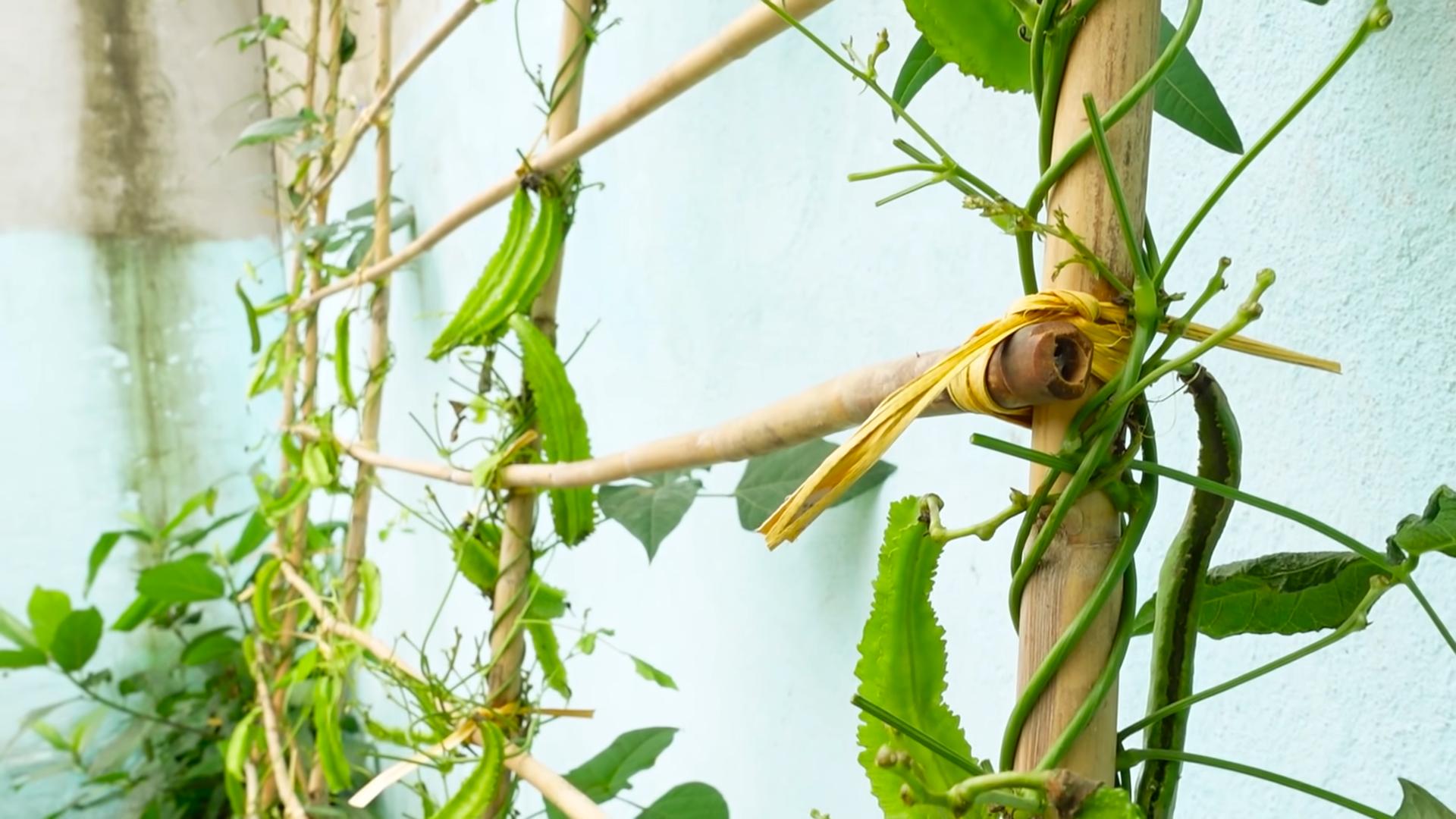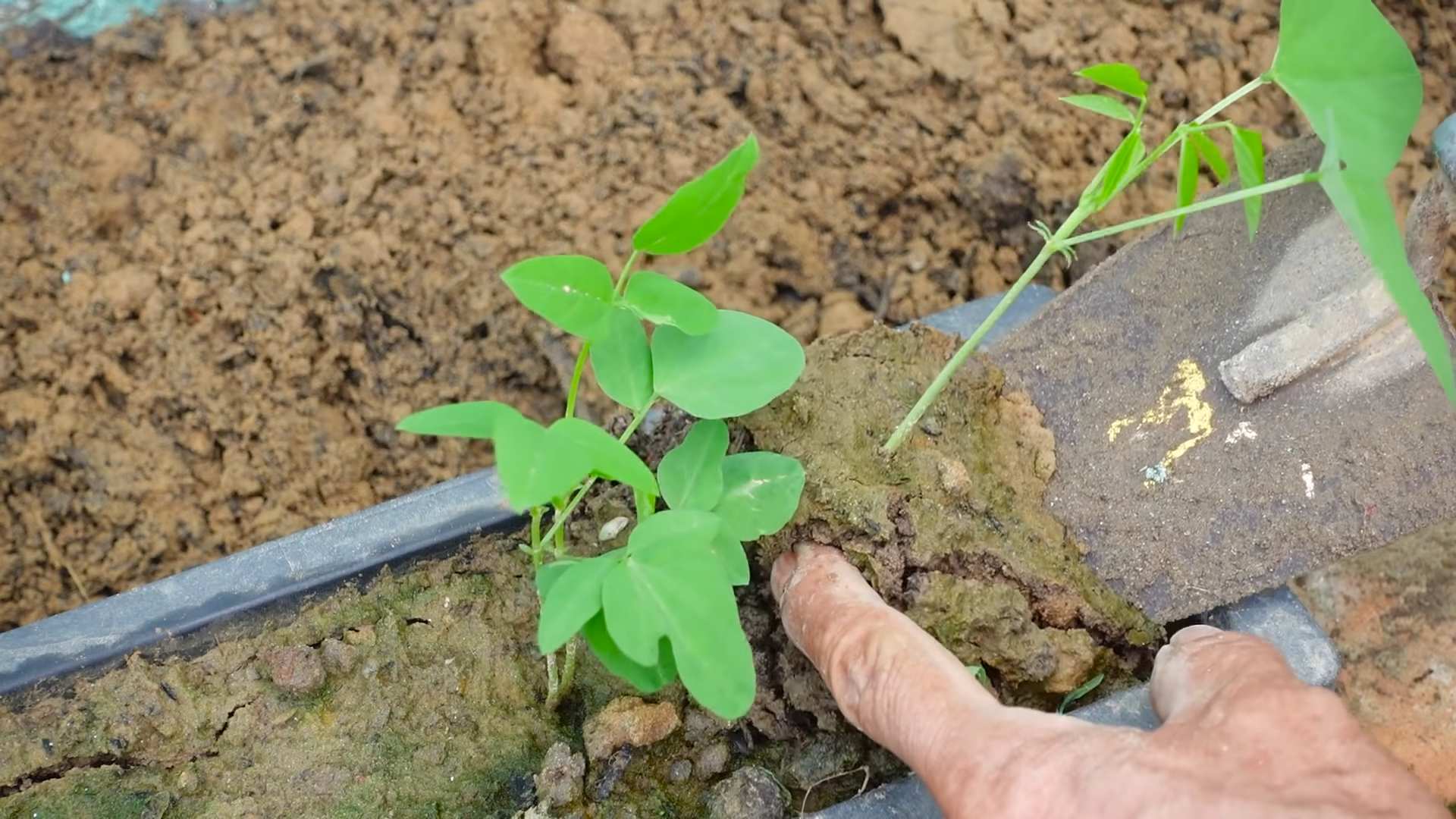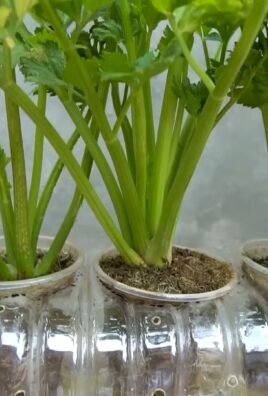Dragon Bean Cultivation: Ever dreamt of transforming your backyard into a vibrant, edible oasis bursting with exotic flavors? I know I have! Forget those bland supermarket veggies – imagine plucking plump, juicy dragon beans straight from your own garden. This isn’t just about growing food; it’s about embarking on a rewarding journey of self-sufficiency and connecting with nature in a truly unique way.
The allure of growing your own food has deep roots, stretching back to ancient civilizations where gardens were not just sources of sustenance but also symbols of prosperity and connection to the earth. While dragon beans might not have the same ancient pedigree as, say, tomatoes, their increasing popularity reflects a growing desire for diverse and exciting culinary experiences right at home.
But let’s be honest, sometimes the idea of gardening feels overwhelming. That’s where these DIY tricks and hacks come in! I’m here to show you that dragon bean cultivation doesn’t have to be complicated or time-consuming. Whether you’re a seasoned gardener or a complete newbie, these simple, effective techniques will empower you to cultivate a thriving dragon bean patch, impress your friends with your green thumb, and enjoy the unparalleled satisfaction of harvesting your own delicious, homegrown produce. Get ready to unlock the secrets to successful dragon bean growing – let’s get started!

Growing Dragon Beans: A Comprehensive DIY Guide
Hey there, fellow gardening enthusiasts! I’m so excited to share my experience with growing Dragon Beans, also known as Winged Beans. These fascinating legumes are not only beautiful climbers but also incredibly nutritious, offering edible pods, leaves, flowers, seeds, and even tubers! I’ve found them to be a rewarding addition to my garden, and I’m confident you will too. This guide will walk you through every step, from seed to harvest, ensuring you have a thriving Dragon Bean patch.
Choosing Your Dragon Bean Variety
Before we dive in, it’s important to know that there are different varieties of Dragon Beans. Some are better suited for specific climates or have different pod colors and sizes. I recommend doing a little research to find a variety that thrives in your region. Look for information on local gardening forums or ask your local nursery for recommendations. I personally prefer the ‘Purple Podded’ variety for its vibrant color and delicious flavor.
Preparing for Planting
Dragon Beans are tropical plants, so they love warmth and sunshine. Here’s how to get your garden ready:
* Sunlight: Dragon Beans need at least 6-8 hours of direct sunlight per day. Choose a location in your garden that receives plenty of sunshine.
* Soil: Well-draining soil is crucial. Dragon Beans don’t like to sit in soggy soil. Amend your soil with compost or other organic matter to improve drainage and fertility. A slightly acidic to neutral pH (6.0-7.0) is ideal.
* Support Structure: These are climbing plants, so they need a sturdy trellis, fence, or other support structure to grow on. I’ve used a simple A-frame trellis made from bamboo poles, and it works great. Make sure your support is at least 6-8 feet tall.
* Timing: Dragon Beans are sensitive to frost, so wait until all danger of frost has passed before planting. The soil temperature should be at least 65°F (18°C). In cooler climates, you can start seeds indoors 4-6 weeks before the last expected frost.
Starting Seeds Indoors (Optional)
If you live in a cooler climate, starting seeds indoors will give you a head start. Here’s how I do it:
1. Soaking the Seeds: Dragon Bean seeds have a hard outer shell. To improve germination, soak the seeds in warm water for 24 hours before planting. This helps soften the shell and allows water to penetrate.
2. Planting the Seeds: Fill small pots or seedling trays with a well-draining seed-starting mix. Plant the seeds about 1 inch deep.
3. Watering: Gently water the soil until it’s moist but not soggy.
4. Warmth and Light: Place the pots in a warm location, ideally around 70-75°F (21-24°C). A heat mat can help speed up germination. Provide plenty of light, either from a sunny window or a grow light.
5. Transplanting: Once the seedlings have developed a few sets of true leaves and the weather has warmed up, you can transplant them into your garden. Harden them off gradually by exposing them to outdoor conditions for a few hours each day over the course of a week.
Planting Dragon Beans Directly in the Garden
If you live in a warmer climate, you can plant Dragon Bean seeds directly in the garden.
1. Prepare the Planting Area: Clear the area of weeds and debris. Amend the soil with compost or other organic matter.
2. Sowing the Seeds: Sow the seeds about 1 inch deep and 6-8 inches apart along the base of your trellis or support structure.
3. Watering: Water the soil thoroughly after planting.
4. Mulching: Apply a layer of mulch around the plants to help retain moisture and suppress weeds. I like to use straw or wood chips.
Caring for Your Dragon Bean Plants
Once your Dragon Bean plants are established, they’re relatively easy to care for. Here’s what I do to keep them happy and healthy:
* Watering: Water regularly, especially during dry periods. Dragon Beans need consistent moisture to thrive. Aim for about 1 inch of water per week.
* Fertilizing: Dragon Beans are legumes, which means they can fix nitrogen from the air. However, they still benefit from occasional fertilization. I like to use a balanced organic fertilizer every few weeks. Avoid over-fertilizing, as this can lead to excessive foliage growth at the expense of pod production.
* Weeding: Keep the area around your Dragon Bean plants free of weeds. Weeds compete for nutrients and water, which can stunt the growth of your plants.
* Pruning: Pruning isn’t strictly necessary, but it can help improve air circulation and encourage bushier growth. I like to trim off any yellowing or damaged leaves. You can also pinch back the growing tips to encourage branching.
* Pest and Disease Control: Dragon Beans are generally resistant to pests and diseases, but they can occasionally be affected by aphids, spider mites, or fungal diseases. Inspect your plants regularly and take action if you notice any problems. For aphids and spider mites, I like to use a strong spray of water or insecticidal soap. For fungal diseases, ensure good air circulation and avoid overhead watering. You can also use a fungicide if necessary.
Harvesting Dragon Beans
The best part of growing Dragon Beans is, of course, the harvest! Here’s what you need to know:
* Pod Harvest: The pods are the most commonly harvested part of the Dragon Bean plant. They can be harvested when they are young and tender, usually about 6-8 inches long. The younger the pods, the more tender they will be. You can eat them raw, steamed, stir-fried, or added to soups and stews. I love them stir-fried with garlic and soy sauce!
* Leaf Harvest: The leaves can also be harvested and eaten like spinach. They are a good source of vitamins and minerals. Harvest the young, tender leaves for the best flavor.
* Flower Harvest: The flowers are edible and have a slightly sweet flavor. They can be added to salads or used as a garnish.
* Seed Harvest: The seeds can be harvested when the pods are mature and dry. Allow the pods to dry on the vine, then shell the seeds and store them in an airtight container. The seeds can be cooked and eaten like beans.
* Tuber Harvest: The tubers can be harvested in the fall, after the plant has died back. They are a good source of carbohydrates and can be cooked and eaten like potatoes. Dig them up carefully to avoid damaging them.
Enjoying Your Dragon Beans
Dragon Beans are incredibly versatile in the kitchen. Here are some of my favorite ways to enjoy them:
* Stir-fries: Dragon Bean pods are delicious stir-fried with garlic, ginger, and soy sauce.
* Salads: Young Dragon Bean leaves and flowers can be added to salads for a nutritious and flavorful boost.
* Soups and Stews: Dragon Bean pods and seeds can be added to soups and stews for added protein and fiber.
* Steamed: Dragon Bean pods can be steamed and served as a side dish.
* Roasted: Dragon Bean tubers can be roasted like potatoes.
Troubleshooting
Even with the best care, you might encounter some challenges when growing Dragon Beans. Here are some common problems and how to address them:
* Poor Germination: If your seeds aren’t germinating, make sure the soil is warm enough and that you’ve soaked the seeds before planting. You can also try scarifying the seeds by gently rubbing them with sandpaper to break the outer shell.
* Slow Growth: If your plants are growing slowly, make sure they’re getting enough sunlight, water, and nutrients. Amend the soil with compost or fertilizer if necessary.
* Yellowing Leaves: Yellowing leaves can be a sign of nutrient deficiency, overwatering, or disease. Check the soil moisture and nutrient levels and adjust accordingly.
* Pest Infestations: If you notice pests on your plants, take action immediately. Use a strong spray of water, insecticidal soap, or other appropriate pest control methods.
* Lack of Pod Production: If your plants are growing well but not producing pods, it could be due to a lack of pollination. Dragon Beans are self-pollinating, but they can benefit from insect pollination. Attract pollinators to your garden by planting flowers that attract bees and butterflies.
Saving Dragon Bean Seeds
If you want to save seeds from your Dragon Bean plants for next year, here’s how:
1. Choose Healthy Plants: Select plants that are healthy and productive.
2. Allow Pods to Dry: Allow the pods to dry completely on the vine.
3. Harvest the Seeds: Shell the seeds from the dried pods.
4. Dry the Seeds: Spread the

Conclusion
So, there you have it! Mastering the art of Dragon Bean Cultivation, while it might sound like something out of a fantasy novel, is entirely within your reach. We’ve walked you through the process, demystifying each step and providing you with the knowledge to nurture these unique beans from seed to harvest.
But why should you embark on this culinary adventure? Simply put, Dragon Beans offer a flavor profile unlike any other. Their subtle sweetness, coupled with a hint of earthiness, makes them incredibly versatile in the kitchen. Imagine adding them to stir-fries for a delightful crunch, incorporating them into hearty stews for added depth, or even roasting them as a healthy and satisfying snack. The possibilities are truly endless.
Beyond the exceptional taste, cultivating your own Dragon Beans offers a sense of accomplishment and connection to your food. There’s something incredibly rewarding about nurturing a plant from seed and then enjoying the fruits (or in this case, beans) of your labor. Plus, you’ll have complete control over the growing process, ensuring that your Dragon Beans are free from harmful pesticides and chemicals.
Don’t be afraid to experiment! Consider different growing mediums, such as coco coir or a blend of compost and perlite, to see what works best for your environment. You can also try varying the amount of sunlight your Dragon Beans receive to influence their growth rate and flavor. For those living in colder climates, consider starting your Dragon Beans indoors and transplanting them outdoors once the weather warms up.
And for the adventurous cooks out there, why not try pickling your Dragon Beans for a tangy and flavorful condiment? Or perhaps fermenting them to create a unique and probiotic-rich ingredient? The only limit is your imagination!
We wholeheartedly encourage you to give Dragon Bean Cultivation a try. It’s a rewarding and delicious experience that will undoubtedly elevate your culinary creations. Once you’ve harvested your first batch of Dragon Beans, we’d love to hear about your experience! Share your tips, tricks, and favorite recipes in the comments below. Let’s build a community of Dragon Bean enthusiasts and inspire others to embark on this exciting journey. Happy growing!
Frequently Asked Questions (FAQ)
What exactly are Dragon Beans and why should I grow them?
Dragon Beans are a unique variety of bean known for their distinctive flavor profile, often described as subtly sweet with earthy undertones. They are incredibly versatile in the kitchen, lending themselves well to stir-fries, stews, salads, and even snacks. Growing your own Dragon Beans allows you to control the growing process, ensuring they are free from harmful chemicals and pesticides. Plus, it’s a rewarding experience to nurture a plant from seed to harvest.
How long does it take to grow Dragon Beans from seed to harvest?
Generally, Dragon Beans take between 60 and 90 days to mature from seed to harvest. This timeframe can vary depending on factors such as climate, sunlight exposure, and soil quality. Providing optimal growing conditions will help ensure a faster and more abundant harvest.
What are the ideal growing conditions for Dragon Beans?
Dragon Beans thrive in warm, sunny locations with well-draining soil. They require at least 6-8 hours of direct sunlight per day. The ideal soil pH is between 6.0 and 7.0. Regular watering is essential, especially during dry periods, but avoid overwatering, which can lead to root rot. Consider adding a layer of mulch around the plants to help retain moisture and suppress weeds.
Can I grow Dragon Beans in containers?
Yes, Dragon Beans can be successfully grown in containers, making them a great option for those with limited garden space. Choose a container that is at least 12 inches deep and wide to accommodate the plant’s root system. Use a high-quality potting mix and ensure the container has adequate drainage holes.
What are some common pests and diseases that affect Dragon Beans?
Common pests that can affect Dragon Beans include aphids, bean beetles, and spider mites. Diseases such as powdery mildew and bean rust can also be problematic. Regularly inspect your plants for signs of pests or diseases and take appropriate action, such as using insecticidal soap or fungicide, if necessary. Practicing good garden hygiene, such as removing diseased leaves and providing adequate air circulation, can help prevent these problems.
How do I know when my Dragon Beans are ready to harvest?
Dragon Beans are typically ready to harvest when the pods are plump and firm, but still relatively young and tender. The beans inside should be well-formed but not overly mature. You can test a few pods to ensure they are tender and flavorful before harvesting the entire crop.
Can I save seeds from my Dragon Beans to plant next year?
Yes, you can save seeds from your Dragon Beans to plant next year. Allow a few pods to fully mature and dry on the plant. Once the pods are completely dry and brittle, carefully remove the beans and store them in an airtight container in a cool, dark, and dry place.
What are some creative ways to use Dragon Beans in cooking?
Dragon Beans are incredibly versatile and can be used in a variety of dishes. Try adding them to stir-fries, stews, soups, and salads. They can also be roasted as a healthy snack or pickled for a tangy condiment. Experiment with different herbs and spices to complement their unique flavor.
Are there any variations I can try when growing Dragon Beans?
Absolutely! You can experiment with different growing mediums, such as coco coir or a blend of compost and perlite. Try varying the amount of sunlight your Dragon Beans receive to influence their growth rate and flavor. You can also try different companion planting techniques to improve their growth and deter pests.
What if I live in a colder climate? Can I still grow Dragon Beans?
Yes, even if you live in a colder climate, you can still grow Dragon Beans. Start your seeds indoors 4-6 weeks before the last expected frost. Transplant the seedlings outdoors once the weather warms up and the risk of frost has passed. You may also need to provide additional protection, such as row covers or a greenhouse, to extend the growing season.




Leave a Comment